S2 E13 : An Allotment Calls For Aid
- Greg
- Jul 28, 2021
- 7 min read
Hello Everyone,
What a stunning week it’s been weather-wise; +30°C every day and glorious sun! The bees have been loving it!

I spent the beginning of the week just doing my rounds and checking on the hives, mainly making sure that the Carniolan (Left) and Buckfast (Right) queens had been released from their cages and settled in their new homes. They are doing excellent and all of the frames in their nucs were completely full of eggs. So much so that I had to add another level of frames to give them room to lay more. I want them nice and strong ready for winter… my god, its 30°C out and I’m already thinking of winter…

During my inspections of Laura, I noticed that she had 15 frames
of brood… (a normal colony has about 6-7 at this time of year!) so I made a split to knock her down a little bit and this unfortunately left me with a conundrum similar to the one I had the other week about letting Steph requeen herself. It’s too late in the year to let a nuc sort it’s own queen and I’ve already got a Buckfast and Carniolan so what other type of queen should I get next? [Wait for it … ~ Kat ed]
A split is when you remove some brood and stores frames from a hive and place them in a nuc, creating another colony. You generally have to shake a fair amount of bees from the hive into the nuc too. It’s a swarm prevention method which grants you the ability to produce another colony.
After a lot of deliberation, I went to the beekeeping forums (full of people more obsessed than myself believe it or not) [I don’t believe it ~ Kat ed]. Supposedly the best native (Apis mellifera mellifera) bee you can get in the UK currently is a Jolanta bee. Jolanta Czajkowska is the name of the British Royal family’s Queen bee breeder… Yes, THE actual royal family of the UK has its own honey farming operation with well over 5000 beehives in Scotland run by a gent called Murray McGregor. I never thought I’d be going into competition with our monarchy when getting into the honey business, but I digress. There’s only one place I know of that you can get a Jolanta as it is so sought after and they are considerably more expensive than other breeds. [Oh really!? This is news to me! ~ Kat ed] Anyway I put an order on and it came not long after. As I type this she is in her new colony sandwiched between hives Laura and Kate at Apiary 1. Next season is going to be very interesting, seeing how they all survive winter etc.
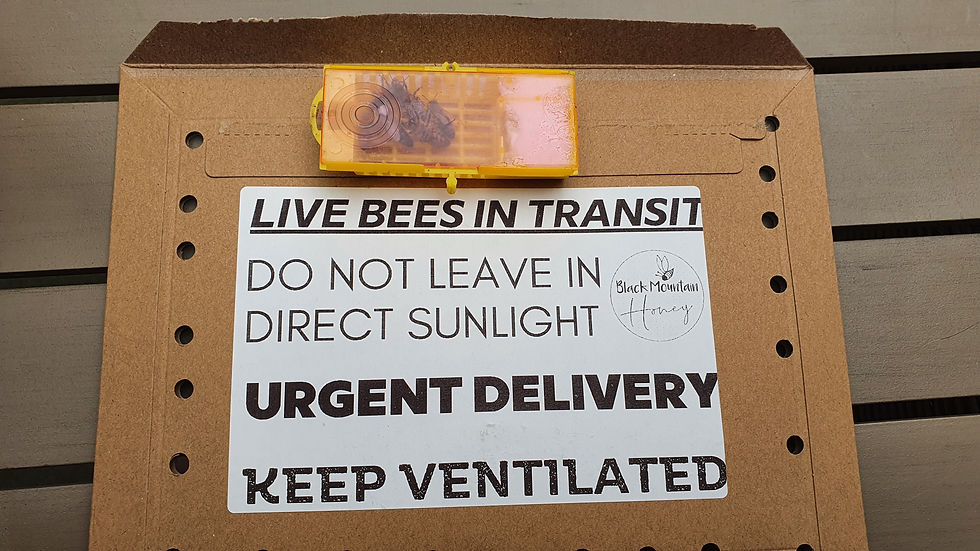
After my last post answering common questions about swarms, I received a phone call from some lovely people who run an allotment in Rainford. They told me that their resident beehives had been kicking out swarms left right and centre in the past few months and as they were hoping to start doing open days soon, they wondered if I could come have a nosey to see if I can stop them from swarming again. To be clear, the hives were owned by their resident beekeeper but whenever they tried to get him to sort out the hive they said he didn’t seem interested and that they hadn’t seen him for over five weeks.
As the hives were owned, I asked the people who run the allotments to get in touch with him and to ask him to inspect them. They came back to me saying that he wasn’t going to do anything, and the swarms were having a negative effect on other allotment owners who were scared or allergic to stings. I decided to pop over and just have a look. The only thing I was willing to do was to remove any queen cells present, to stop the immediate swarming risk, and to check for disease as they are quite close to my apiaries and if they are being neglected then they’re a disease risk to me. It’s a big no-no to mess with other peoples hives without permission and I only did it because of the desperation of the requester and the lack of interest of the beekeeper.
The allotments in Rainford are like a little piece of heaven hidden away. I had to drive in due to the amount of guff I may need when doing inspections and as I was trundling through all I could see stunning gardens left and right, people tending to them stopped and gave me a smile and a wave as I passed by. It was a truly lovely place to be in.
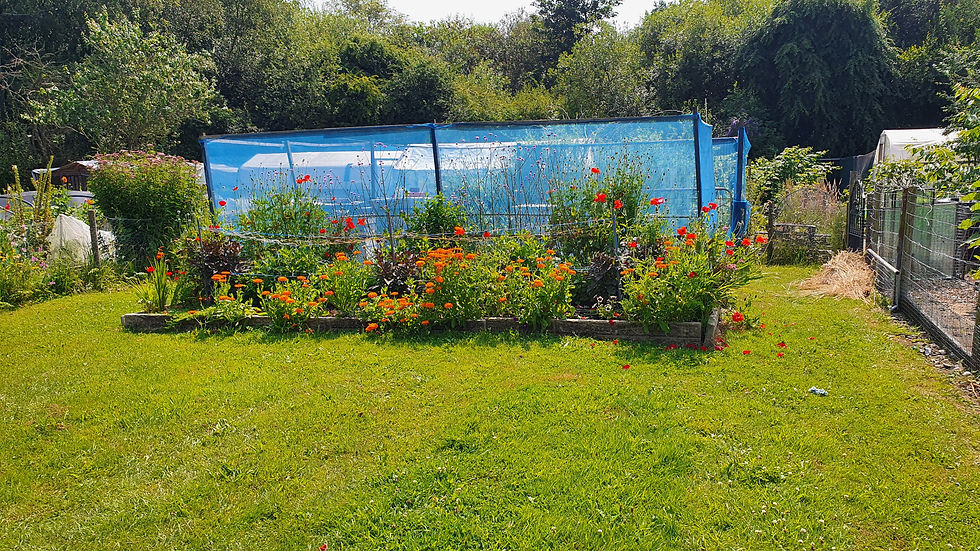
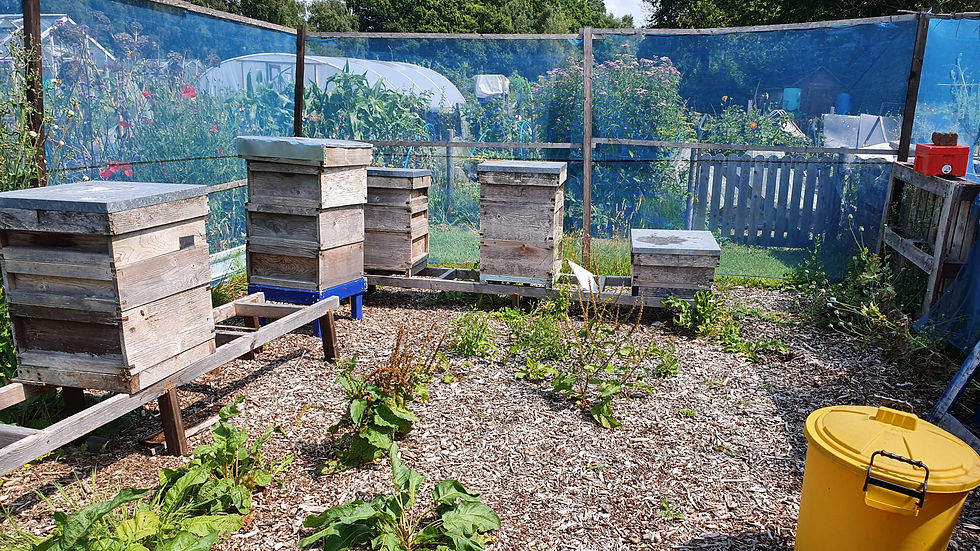

The hives were dead centre and had a good tall mesh fence surrounding the apiary to stop the bees from bothering people. Initially I thought that maybe it was all a misunderstanding as some thought and planning had obviously gone into the apiary design and the area was in good nick. The hives looked a bit old and battered but untreated pine hives can get like that after a season or two. The sun was beaming down, and I decided to just open one up and see what it’s like inside as non-beekeepers can sometimes overexaggerate* when it comes to swarms and bee suits are hotter than hell in the sun. Plus, I really didn’t want to be going through someone else’s stuff.
*I got a call last month about a swarm and when I got there it was just 30 bees on the homeowner’s rosebush.
I opened up the first hive and found a dead out which made me instantly worried. A dead out means that the colony has died, and the hive is full of dead bees littering the floor. They generally happen in winter/early spring when bees have eaten all of their food and are unable to fly out to get more and so starve to death. Seeing this in summer is bad for a number of reasons, the main two are that the bees have died to a disease, as there is so much food in abundance in summer, or they died in winter and the beekeeper couldn’t be bothered to clean it out. Dead outs are a beekeeper’s worst nightmare as bees from other nearby colonies will start a robbing frenzy, cleaning the comb out of any possible food. If the dead colony had a disease such as American Foul Brood (https://nationalbeeunit.com/index.cfm?pageid=88) then every other colony that robbed from it has possibly contracted it too.
The beekeeper didn’t even block the entrance to stop this robbing frenzy from occurring either and all of the comb was empty. If there was any disease in there, then I was unable to tell. With this in mind I decided I needed to check all of the other colonies. I scraped out the dead out and taped up the entrance to stop any further chance of disease (if there was any) from spreading. I’m not going to go into too many details about this as I don’t want to complain too much and at the end of the day each beekeeper has their own habits and processes. What may be right for one of us may be completely frowned upon by another. The main things I found in the other hives were sixteen hatched queen cells (meaning these hives had swarmed at least sixteen times!), four charged queen cups and three capped queen cells waiting to emerge. The colonies inside were quite small for the space they inhabited, probably due to the number of swarms they had lost.
There were no diseases that I could see and two of the hives had laying queens now, so those colonies were safe from future collapse. There was an infestation of wax moth in one which I did my best to remove but judging from the state of the comb I probably missed a few. Wax moth is an annoying little pest that sneaks into a hive and lays its eggs inside. The moth larvae hatches and then burrows its way into the comb feasting on all of the waste in the brood frames. This wrecks the comb and can spread disease from the larva faeces and silk webbing. You can sometimes see where a moth larva is by a discolouring of a capped brood cell where it has burrowed through and eaten everything inside. You must scratch away at the capping to try and find it. Once found, the larva will erupt out of the cell and try to make a break for it at breakneck speed. They’re horrible little buggers and can wreak havoc on weak colonies.
All of the issues I found in these hives were completely preventable from weekly inspections. Beekeeping takes a lot of time, effort and money. I personally love every minute of it and I’m only slightly worried that it will make me bankrupt if I don’t start selling honey soon but I’m completely hooked. I think a lot of people get into beekeeping because they think they want to “save the bees” and get “honey on tap!” without realising what is actually required. After a few inspections without any honey piling up their enthusiasm wanes and eventually the hobby is abandoned along with the bees.
After speaking to the allotment manager, I found out that this beekeeper has been dealing with a lot of personal issues, so they probably just don’t have the time to check on the hives every week. I asked the allotment manager to let the beekeeper know what I’d done, how to contact me about anything and that if they wanted I would look after the hives for them until they were able to take it up again or look into buying the apiary off them if they wanted to give up the hobby. I’m waiting for a reply now, so let’s see what happens. The Allotment manager thanked me for my help and gave me a cauliflower, some huge spring onions and a stunning bouquet of sweet peas for Kat. [They were lovely, thank you! ~ Kat ed]
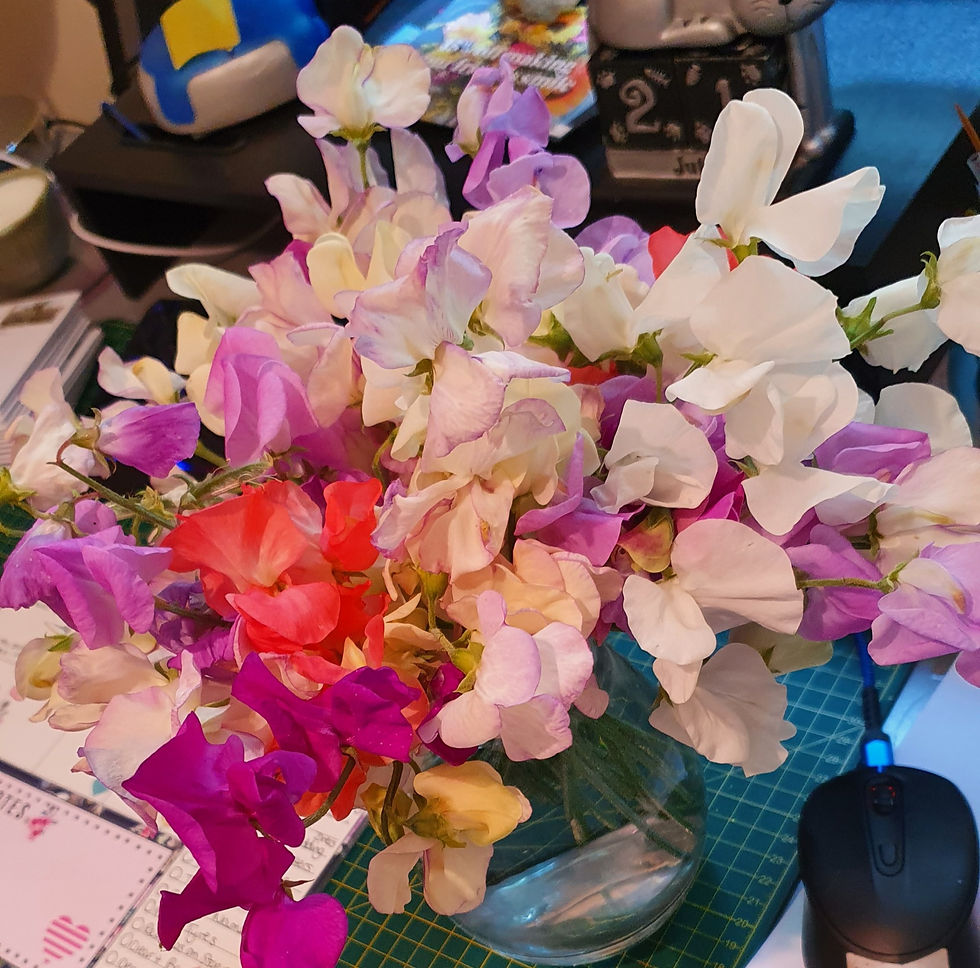
If you know of any abandoned hives that you need removing then please give me a bell, more than happy to help anyone out.
Hope you’re all safe and well,
Greg


































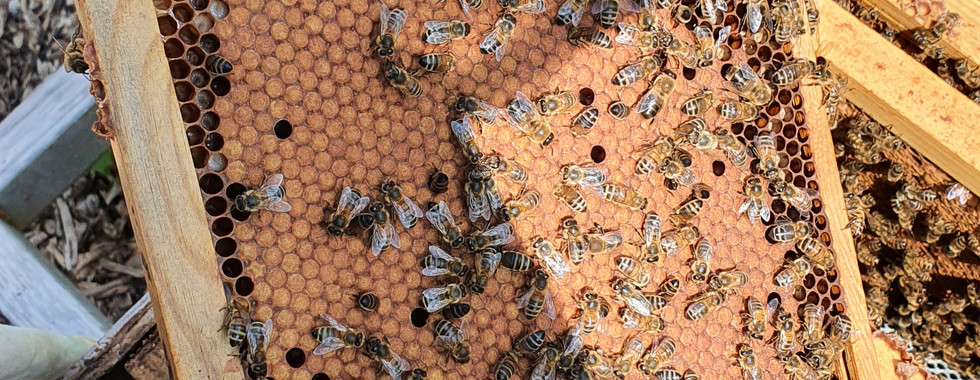


















































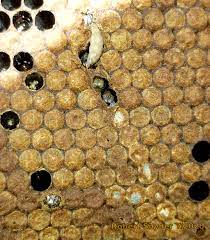




Comments